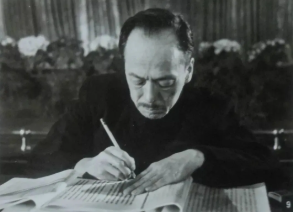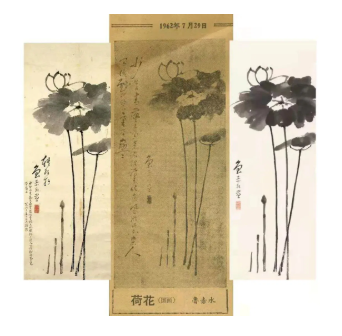Kang Sheng. Artistic beauty and political horror.


This piece is the work of the formidable Zhang Zongke (ZZ), better known by his nom de guerre, Kang Sheng (康生), or simply KS (1898-1975). A mysterious, troubling figure with multiple facets and dozens of identities, he was primarily known as the head of the repression departments, under the assumed name "Comrade Shaoqing" or the service code "Number 1". A true Chinese Beria, feared by party members, supported by Mao, he headed Chinese counter-espionage and the repression services of the People's Republic of China for over 35 years (1). An instigator and instrument of political repression during those years, he was also Vice-Chairman of the CPC Central Committee and a member of the highly selective Politburo. ZZ hailed from a wealthy peasant family in Shandong.
However, what many people, even in China, do not know is that he is also one of the four major calligraphers of contemporary China, alongside Guo Moruo (2), Qi Yanming (3), and Shen Yinmo (4). For his calligraphic creations, he used the pen name Lu Chishui, and for his paintings, he used Qi Baishi.
He created incognito, which allowed him to gauge the criticisms or praises of his works without his political identity interfering. His calligraphic style adheres to the pure tradition of the jīncǎo (金草) style (5), an ancient cursive script that began during the Han Dynasty and evolved from the official script. However, he imposed his own distinct style, influenced by the Bei (碑) practice with the brush (6), a style characterized by monumental strength and structure. His calligraphic and graphic works (paintings) are renowned for their elegance, majesty, and at times their extreme subtlety, demonstrating exceptional technical mastery.
Each of his creations is a masterpiece that harmoniously combines style and text, earning the admiration of all contemporary calligraphers. His ability to be an extraordinary copyist of genre and style is also extremely rare and testifies to an uncommon artistic versatility.

The work presented above, created by KS, is clearly in the style of 'Bada Shanren Yiyi' (八大山人逸意) (7), according to many leading experts from the prestigious 'Xiling Seal Art Society', who were astounded by its beauty and the astonishing resemblance of the style. The left cursive signature 'Lu Chishui Hua' is applied in cursive script, and the lower seal is marked with a rectangular imprint in the pure white stone seal style, with the words 'Ink Lotus'. In short, an artistic genius in the body of a criminal.
Embun.
Notes.
1: Formerly Shihuibu and Gonganbu, now unified.
2: https://en.wikipedia.org/wiki/Guo_Moruo
3: https://www.mutualart.com/Artist/Qi-Yanming/7078CE0382FB5031/Biography
4: https://en.wikipedia.org/wiki/Shen_Yinmo
5: Cursive style. See: https://en.wikipedia.org/wiki/Cursive_script_(East_Asia
6: https://www.youtube.com/watch?v=nbE7nbSChvc
8: Also commonly known as the "Nishinuginsha". This is an academic organisation centered on seal engraving for centuries, guaranteeing the authenticity of Chinese artistic and calligraphic works. http://www.xlys.org.cn/
